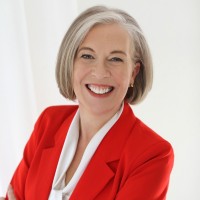 In this podcast, Sara Taylor, a renowned Diversity and Inclusion strategist and the President of deepSEE Consulting, delves into the pervasive issue of unconscious bias and how it shapes our interactions and decision-making processes in the workplace and beyond. Drawing on her extensive experience and her upcoming book, “Thinking at the Speed of Bias,” Sara provides a practical roadmap for individuals and organizations keen to foster true equity and inclusion in an increasingly polarized world.
In this podcast, Sara Taylor, a renowned Diversity and Inclusion strategist and the President of deepSEE Consulting, delves into the pervasive issue of unconscious bias and how it shapes our interactions and decision-making processes in the workplace and beyond. Drawing on her extensive experience and her upcoming book, “Thinking at the Speed of Bias,” Sara provides a practical roadmap for individuals and organizations keen to foster true equity and inclusion in an increasingly polarized world.
Recognizing Unconscious Bias
Unconscious biases are automatic, mental shortcuts used to quickly assess situations and people. While these biases are a common aspect of human cognition, they can lead to skewed decisions and perpetuate inequality. Sara Taylor encourages us to slow down our thought processes to recognize and scrutinize these biases. By asking ourselves questions like, “Is my reaction based on facts or my assumptions?” we can begin to dismantle these often invisible barriers.
Building Cultural Competence
Cultural competence is not just about understanding diverse backgrounds; it’s about integrating knowledge into everyday actions. Sara outlines a clear set of skills and strategies aimed at developing cultural competence. Through engaging examples, she illustrates how these competencies can lead to more nuanced understandings and interactions with people from different cultures and walks of life.
Scaling Change
The insights provided in Sara’s work extend beyond individual changes. She explains how organizations can amplify their impact by scaling cultural competencies across their structures and systems. This transformative approach ensures that inclusivity becomes embedded within the organizational fabric, promoting long-term equity and effectiveness.
A Vision for the Future
With unwavering optimism, Sara shares how deliberate and informed efforts can create a more equitable world. Her practical guide is an indispensable resource for anyone looking to make meaningful changes in their personal and professional lives.
Sara Taylor’s message is clear: By confronting and controlling our unconscious biases, we can create environments where diversity and inclusion are not just goals but realities.
You may also refer to the transcripts below for the full transciption (not edited) of the interview.
Greg Voisen
Welcome back to Inside Personal Growth for another exciting episode of our podcast. And look at the title of this book Thinking at the Speed of Bias by Sara Taylor. Sara is joining us from Minneapolis, Minnesota. Good day to you, Sara.
Sara Taylor
Well, fabulous day to you, Greg. Thanks so much for having me glad to be here.
Greg Voisen
Thank you for being on it's always great to speak with authors that are writing about what is pretty cutting edge, both from a business standpoint and yours, actually applies to personal standpoint as well. So, when we come to personal growth and business. This is the book, and for all my LinkedIn listeners, definitely will put a 59-second short up there for you to take a look to so you can do it. Sara has two websites, and I want you, my listeners to know about. One is Sara Taylor, and that's just t-a-y-l-o-r.com, right? That's one place that you can get to her. And the other one is Deep See, and that's s-e-e, not s-e-a, deepseeconsulting.com there you can learn about her book, about her, about how her company works inside of cultures and what they do to help people become more aligned and more effective in what it is that they do. So, I'm going to let our listeners know something about you. She was on a podcast we were just talking about was seven years ago, and that one was called filter shift. And we'll put a link to that podcast as well, so our listeners can, if you want to go check out the book filter shift as well. She's for 20 years now. She's been helping organizations and the individuals, and I'm gonna put highlight that within them to be more effective and inclusive through their engaging diversity inclusion trainings, comprehensive leadership development programs, innovative cultural competence frameworks. For the past 15 years, as the founder and president of deep C, S, E consulting, she has worked with HR managers, chief diversity officers, and high level executives at 3m Company. We just had one on Jay. She's the top at 3am she just did a podcast that we just published, AARP, Cleveland Foundation, Coca Cola, Marriott, General Mills, United Way Worldwide, National Credit Union Ingersoll Rand Seagate, and the list goes on, including Thrivent financial, which is right there in Minneapolis. She's the author of a new book. This new book now not the old book, which is up it as a website, thinking at the speed of bias. She also served three years as Director of Diversity Inclusion for Ramsey County in Minnesota. We were just talking about Tim waltz a second ago. Are going to be our new Vice President? This is my podcast so I can say whatever I want. She established a new department to lead the DNI efforts for 5000 employees and developing leading, long term organizational change strategies. So we'll get into that, because actually, I've learned that about 80% of lead change strategies fail, and she has a way to actually help them not fail. She's an active member of the Society for Human Resource Management, human resource professionals in Minnesota, Minnesota Society of Human management, Twin Cities, resources well, and she earned her master's degree in diversity and organizational development from where else but the University of Minnesota. She and her husband reside in the suburb of St Paul, and they have four children. Well, Sara, an honor to have you back on again after seven years, and thank goodness you wrote another book, because people always need to kind of keep moving in a direction and be curious, and you're the kind of person that is curious. So what inspired you to explore the concept of these unconscious filters, which everybody has. They just don't realize they have them, and they're in impact on our thoughts and behaviors, I'm going to say, both in the workplace and outside the workplace.
Sara Taylor
Yeah, absolutely. Well, a couple of things. First of all, folks might be surprised those. Aren't watching the video. Don't know that I am a white woman. You might be surprised thinking, What the heck is a white woman doing as a diversity, equity and inclusion practitioner, but I have actually been talking about bias and stereotypes. I started actually giving speeches when I was in junior high about stereotypes and discrimination, before dei was even a thing, really, and that, and then all of my career, and it's actually now 35 years that I have been a dei practitioner. So in those 35 years, my work has really been about taking research based information and making it practical and applicable to folks and really through that make transforming organizations and the individuals within them, so over and over again, working with organizations, groups within organizations, executives and so forth, and giving them tools to develop and as My mother would always say, when she was a fabulous cook, and anytime she'd try new recipes, she'd say, well, you're all my guinea pigs. In many ways, my clients have been my guinea pigs for the last 22 years that we have had deep sea and so they're all of the lessons that we have learned through clients and through helping individuals and organizations to develop to be more culturally competent, to reduce the negative impact of bias, and so when we see how much that impacts in the organizations that we're working in. We really wanted to be able to make that, the message and the tools more broadly available. So let's,
Greg Voisen
let's talk about that, because, and not to cut you off, but I have a right questions for you. You know, something comes to mind as you're speaking, and that is that in cultural diversity, whether it's an Asian person or a black person, or somebody from a different nationality or race, they might be Norwegian. The reality is, their upbringing was different than ours, say, as a white woman, and for all of you, you've seen me definitely a white man, too white because I've gotten too much spin cancer. But the reality is, is that because of their cultural how they were brought up, culturally, coming together and working together in a company sometimes can be quite challenging, like, Hey, how is it that we treat certain people. So if you're Asian or if you were black, or if you were this, somebody from Norwegian, Norwegian descent, how do you actually kind of codify all that and help companies wrap their hands around it, especially when you're working in teams with all this inclusion and cultural diversion. What is it your company does?
Sara Taylor
Yeah, absolutely. Well, first is we help folks to understand how our brains are working as we interact across difference, and going back to that competence, we know that we're all at some particular stage of five stages progressively more effective stages. We're all at one stage or another in how effective we are in interacting across difference. And so first is knowing what stage Am I in. Think about it as I frequently use the analogy of if you had five stages of math ability, you know, elementary school, high school, college, masters, PhD as an example, and you're trying to solve a PhD level problem, well, you'd want Folks that have a PhD level of ability, right? Well, in our organizations and even just in our daily interactions, we have PhD level problems and PhD level issues that come up. Even in my one on one interactions, they come up so if I don't have that ability, that fifth stage of ability. I'm not able to be my most effective. I'm not able to make the most effective decisions, and my organization, then is also operating with the majority of folks that are not effective. So that's the first piece is. So
Greg Voisen
why don't you get. You tell the listeners what those five stages are,
Sara Taylor
yeah, just overall, a big overview, yeah, yeah. The first is oblivious to even easy to observe differences. The second is judgmental us, them, good, bad, the stage where conscious stereotypes live. All of X group were smart, all of that y group were lazy. The third stage, which is the last of the ineffective stages, is where the vast majority of folks are, almost 70% and we know this based on the assessment that's been done globally with these particular stages of development. That particular stage, I say that the mindset of that stage is a focus on differences, divides, a focus on similarity unites. And we see that stage socialized everywhere, which is why so many of us are in that stage. Then the last two stages are where we're finally able to observe our own unconscious filters, and we can talk about those in a bit. We're able to actually see how it is actually our filters that are interacting with each other, and we're able to see that in the fourth stage, and in the fifth stage, we're able to actually adjust based on those filters that are interacting.
Greg Voisen
Interesting, you know, you describe the distinction, or if you could describe for the listeners, between filters and frames. Yes, you know. So, how do these concepts interact, and why is it important to differentiate between a filter and a frame?
Sara Taylor
Yep, a number of things, because of how we can understand each other, but also how we can understand our own brain. So I coined those terms back, I don't know, over a decade ago. Frames are the differences that we can easily observe. So as we already mentioned, you know, I'm white. I'm a woman. You can tell I'm middle aged, 57 to be exact. I'm five six. You know, you see my size, you see my body language. But other than that, you don't see a whole lot. Those are my frames, my filters. On the other hand, operate in my unconscious. They're an unconscious mechanism that create all of my preferences, all of my perceptions, even my decisions, my thoughts and therefore my behaviors. So when I'm interacting with someone, I may think and be really aware of, oh, I'm interacting with, for you, I'm interacting with a white man, if that's all I'm really thinking about, and I'm missing the incredible complexity that you bring through your filters. And just to give you a sense of the difference and just how much our filters hold of information, actually, what gets at that with a question, how many pieces of information do you think our brains take in in just one second? Take a guess. You
Greg Voisen
know, I'd forget. I've heard it. What 10,000 11 million? 11 million? Well, I was way off.
Sara Taylor
Well, because it's really hard to imagine. And the reason why it's hard to imagine is because of the second part of that question, how many of those 11 million are we conscious of? It's only 40. So that means every second we have 10,999,960 pieces of information that are input absorbed by our unconscious filters. So you mentioned earlier, cultural differences, and that's one of the types. There are three different types of filters. So as an example, over a lifetime, I've got filters that I have absorbed information that I've taken in that are norms from the groups that I'm a part of, and those are going to dictate for me, not only how I behave, but also how I judge others. So let's say just a different cultural style of communication. I'm a direct communicator. I might be interacting with an indirect communicator if I don't see that as a filter and I'm paying attention to their frame, and their frame is very different from me. I associate my judgments. Of the filter, like, Ooh, that was rude to say that I associate that judgment of the filter to that identity difference. So I'm from a group there, from B group. So instead of saying that behavior was rude, I say B group is rude, and I don't even realize how my filters have decided all of that.
Greg Voisen
So filters, in one sense, to me, as we've been inculcated all of our lives through school and home and whatever. In some cases, it's a protection mechanism. We believe it's a protection mechanism right in in a sense that. And here's where I'm going with this. In your previous book, filter, shift, there's a there is central to the approach, what you call the development of stages of this process and how individuals can progress through them. You just talked about that a bit. But whether I'm at stage three or four or five, as you did, clearly articulate that, I think that we bounce around. We don't actually stay at any one stage again, this is my personal perception of it, because we're human souls on this planet trying to interact and come as a soul to work, hopefully, with all of our skills and talents and abilities and whatever. But at the same time, what we're talking about is unconscious. Yes, it just exists because we are who we are, right? And I'm not saying that we can't learn about who we are, but some people don't really care about learning.
Sara Taylor
Oh, absolutely. Oh my gosh. So many points there that I want to pick apart. I give you a lot of material to why you said we've got five hours, right? So let me start with the last some people don't care to learn, fabulous whatever. They're probably in that second stage, and they're the ones that are limiting their own effectiveness, and they're limiting their own I mean, think of it this way, if I have an opportunity to understand filters that are deciding for me, do I want to do that or not? Or, you know? Yeah, I guess the option is, let those filters keep deciding for you, let them be in control. You know that, and for folks in that stage, you know that definitely is an option. We're really targeting more the folks that are the majority folks, 70% that are in that third stage. And you mentioned the it's actually a common misperception that I can go back and forth between these stages. And I talk about this in thinking at the speed of bias of you know, if you really think about it as developmental, think about other ways that we develop. We're newborns, then we're toddlers, then we're preschoolers. Now certainly there are certain, you know, behaviors, so we might kind of go back and forth in those stages of development, but you don't have a toddler wake up one day and say, I'm going to go back to losing all of my toddler skills, and I'm going to go back to only my skills, of of just going to completely lose everything. Or tomorrow I'm
Greg Voisen
going to wait, not going back into my diapers, right, right? Or,
Sara Taylor
you know, tomorrow I want to be a preschooler, and then the next day I'm going to go back to being a toddler, a toddler, it just doesn't happen. Think math. You know, you got to learn the third grade skills before you move to the fourth grade skills. And once you've learned those fourth grade skills, you've got them. The same is true here, once you have and think of it this way, those latter two stages in particular, understanding, witnessing, first of all, how your unconscious filters decide your thoughts. Once you have that experience and you really are able to witness that, it's difficult to you just it's very, very rare to go back
Greg Voisen
Well, one of one of our political leaders, has certainly gone back. I'm not going to mention any names here, but when you talk about going from toddler to adolescent to whatever, I just sometimes I wonder about the mentality. But again, I say, This is my show. I can say what I want out. The reality is, without mentioning any names, everybody could put a name to that one, if you'd like. Yeah, the you talk about polarized mindsets, and I think what people out there listening might want to know is, what are the strategies that you'd recommend for breaking these polarized mindsets, or polarization, especially in highly divided environments. So they let me just state this, in a highly divided environment. Look, you had a police force in Minneapolis that had some pretty bad people on it, right? So the reality is, is that, and I'm not going to point to all of these things, but what I am going to say is that, how much more polarized could you get? Yeah, right, right? And you're saying, well, these are human souls too, that acted this way, bad behavior, right? And you see this happen in companies as well, right, right? Maybe not that extreme, but the reality is, extremes. What are you gonna How do you come in? Sara Taylor, all bright and smiley, white female at 5857 years old, and you're gonna talk to all these police force like we're gonna change this media bias, right?
Sara Taylor
Right. Well, and actually, we have different public safety folks across the different public safety realms that are clients. So we do exactly that. And I can talk about that. I do want to just say a couple more things about polarization, though. First, that helps us to understand it. Number one, you mentioned one particular leader, but one of the things when I was researching for the book, I really did a large global scan. And this is some stuff that didn't make the book. Some of it did, but we see across the globe, there are leaders that are dialing up polarization. Now, how do we know that they're dialing up polarization? Two? Two ways. Number one, they're using polarization language. Which polarization is that second stage of development us now, even at they're not even at three, they're not even at three, they're not even at one. Yeah, yeah. And so the other thing that we know, one of the things that fuels and is connected to polarization, is the emotion of fear. So when you have a leader that dials up the dial of fear. They are dialing up polarization. Now just think, in what other way would we say we want a leader to dial up ineffectiveness? It's ridiculous, but it's happening across the globe. The other last thing I want to say about leaders before we move to those strategies for polarization is how important, critically, critically important the leader in organizations, in communities, in countries, how important their role is, and that going back to those, those stages of development, in the 1000s of groups, organizations that we have worked with at Deep Sea, we've never seen an organization that is more developed than its leaders. Now that's not because leaders are somehow better, smarter, whatever. It's because leaders set the bar and create the tone in organizations. And so once again, we need to think about we are presented with incredibly challenging
Greg Voisen
problems, issues. Well, you know, could I add something absolutely there's a board of directors that sits in a company, usually if they're of any major size or consequence, and if they're hiring leaders who are supposed to be culturally diverse. But yet, maybe they did, and they didn't get the job done, they go back on their own fears. Yes, as a board of like our stock is falling. This is happening. What's happening? They find a leader that doesn't fit that rule, yeah, who's into the fear that instills that because they're looking for a result that they'd like to see, which would let me call it greater productivity, greater whatever. And they're doing just the opposite. They're actually frightening people. Yeah, and they're not getting anywhere with that particular philosophy, right? It's, it's a it's a slippery slope. It's not going anywhere that on the other hand, though, what? What would you say to. The Board of Directors of a company who you're addressing right now, let's just assume some people on a board are listening about this issue. I mean, look, we all get afraid at times. We're afraid of the economy. And I heard a statement Jonathan field saying, I want to add this. He said, uncertainty is your way to opportunity. If you can't get through uncertainty, you can't get the opportunity. But if you look at uncertainty as fearful, I think the whole world right now seems to be uncertain. It appears that way, but in my estimation, it's an illusion. We've never had more opportunity in our whole life than we have right now. Absolutely right. So to buy into that and then hire somebody that's going to instill additional feel is fear is absolutely crazy. I love what you said. So, yeah, absolutely off on all this. Your turn to talk. Yeah, well, and
Sara Taylor
you know, we know actually, from research, one of the antidotes to fear is hope, and that's essentially what you're talking about opportunity. Let's talk about the opportunities that we have here. So let's even just take the board that says, you know, we really don't want to talk about this dei stuff anymore, because it's just gotten kind of too contentious. So we're just not going to talk about it right to lean into. What are the opportunities there, and what are the opportunities that we're going to miss? The other thing is just the reality to those organizations that are are pulling back and saying, we're not going to talk Dei, we're not going to, you know, look at, literally, can't be a part of. And we can name some of the companies that have publicly come out, Tractor Supply. John Deere, you know, to those organizations, I say what you're doing is doing a fabulous job at preparing your workforce and your workplace for the 1950s
Greg Voisen
Yeah, you're gone longer in the 1950s so that being said, that's a really important point. Look, you work right, not quite smack dab in the middle of this country and not quite smack dab the bread belt. But the reality is, is that today, if, if we're not going to address that, and you can show financially, let's say that Sara Taylor's firm can actually show, after we completed our program, whether it took a year or two years for you to drag these numbers together, that what we did had an impact in these 12 categories, right? So could you speak with us about a great success you've had after C consultings come in and actually worked with the employees to make it a better place to work and a more inclusive place and more culturally diverse? Yeah, I'll
Sara Taylor
talk first to the ones that folks might think are obvious, and then I really want to add a couple that aren't so obvious, because this work touches every aspect of the organization, because it's about how we think so, a couple that were that might be more obvious to folks we had one particular organization who a specific segment of their organization, a call center in particular, that continually had the lowest engagement scores. I mean, we're talking like, you know, 40% kind of a thing, and it, I'm sorry, I don't remember the exact percent, but it was like an exponential jump in their engagement scores, and their executives attributed it all to the work that we did, those are obvious. That's about inclusion. It's about the environment, right? Another that's obvious. Organization that had done kind of, your typical dei work for years and had a regular yearly kind of hiring process where they'd bring in, you know, hundreds of folks. And even though availability of bipoc folks in their population, in their community, was 25% they couldn't get past hiring more than 6% and with our process of actually developing folks that were making those decisions, they were able to increase that to 35% and they've maintained it for a number of years. So those, yeah, as substantial right now, those are the obvious, but I'll give you a couple more that aren't so obvious, but one particular client that the CEO literally stopped one of the training sessions that we were in right in the middle, and he said, I'm sorry. I know this is important, but I just have to stop and say I have completely approached our budgeting process from the wrong perspective. I can tell I've been approaching it from. That third mindset, and right now, because they were in the middle of budget season, he said, right now, I can tell you, we're going to change our budgeting process. You don't think about budgeting process as something that, but it's about how we think, right? Yeah. And then another where I'll just mention it real quickly, an organization that was kind of in the continual M and A cycles, right? And when they were going through the process with us, their executive team, they were also going through a acquisition, and they had the same measures that they would measure with all of their past acquisitions and and mergers, and their scores were significantly higher, significantly sooner. And once again, it was those executives themselves that said it's because of this work that we've been doing to really identify our filters and how we had a filter driven culture that we were asking these folks to move into.
Greg Voisen
Well, it's just goes to, you know, I don't know how long ago is that Rita McGrath was on here. And, you know, look, if you're a visionary and a leader, you have to be able to look forward. You have to be able to see and in the last two cases, you cited the individuals connected the dots. And you know, the reality is this is all one big patchwork quilt, and everything is interconnected, and this is a very key part now for the person who's a leader out there in a position of leadership, how can these individuals use the principles in your book to create more equitable and inclusive workplaces, because, you know, they may be sitting here listening. Is going okay? Great. I understand. I have unconscious filters. I have biases. I have whatever. I've never really addressed these I don't understand it much. What little sound advice could you just give to somebody other than, let's go buy the book, right? You're going to write. But the reality is, what could you tell them? It would be worth it, right now,
Sara Taylor
yeah, two. I'll give two different things. One is, if you think about there's so much that our filters are doing that's all in our unconscious, and the place where we can intervene is when they pop a thought to our conscious mind. Now typically, and the vast majority of us, like 85% of us, and again, this from that assessment, operate in what I call the passive conscious process. So our filters create our conscious thought and then our conscious thought, we don't do anything. We just pass it along to a behavior. So whatever our filters say, that's the behavior we do, conscious thought is really not doing anything. So I talk in the book about the active conscious process, where once that comes up from my filters, I'm able to check and challenge that, and I'm able to sort through, what if that information is biased information? What if that information actually isn't true? What if that information isn't helpful to me, isn't helpful to the person that I'm interacting with that helps me to be more effective in that particular interaction? The other real easy that even if you aren't doing that developmental work, is assume positive intent. So when we have filter fights, that is, I've got very different filters from the other person. We're in a conflict, we're in a misunderstanding. We don't see it as filters. My filters are judging them negatively. They're rude, they're unprofessional, they're this, that or the other. If we stop and assume positive intent, we can get to a bet a different place. Assume positive intent and then assume different filters that helps us to understand where they're coming from. And some folks will say, Well, yeah, but, like, does everybody have positive intent? You know, I have asked, like, literally 10s of 1000s that certainly no scientific survey, but in my presentations, like 10s of 1000s of people, and I've said, Okay, I've got an assumption that the vast majority of us show up every day with positive intent. What do you think? And everybody says, Yeah, I mean seriously, Greg, who shows up and says, I really want to be an ogre in the workplace today, like, I just really want to be a jerk. Oh, we don't know what. Why are there misunderstandings then? Because I don't know how my filters are clouding my perception of others, and also dictating for me how I respond to them,
Greg Voisen
well, and also your decision making process. And I, you know, look, I a lot of my listeners already know this. I work with Hypnotherapist. So you got the unconscious, the subconscious, yeah, the conscious. Yes, and the super conscious, that's super consciousness. So if you go all the way down to the subconscious, which you don't really realize until you, I'm not saying work with a hypnotherapist, but until you really realize how much has been, as in, is been embedded in there that can be released to activate your potential, right? Yes, and, and I think that that is a place where a lot of people miss, because your potential is on in unlocking what's in that subconscious, right? Absolutely, yeah. So I would just say to get to this point of where you say unconscious pilters, that's right, but as soon as you recognize that they were unconscious, they're now conscious. Now you said, Well, they're conscious, but you're not doing anything about them, because you're just conscious. So that brings me to a question that you talk about the danger of tractionless transactions in what you call the DEI effort, what are some of the common pitfalls organizations face in this area? And I'm not laughing at it. I'm just saying, oh boy, do I get this one. And how can they avoid them?
Sara Taylor
Yeah, yeah. Well, think back again. If we're thinking about we're trying to solve a PhD level problem, and we've got a high school level of math ability,
Greg Voisen
yeah.
Sara Taylor
Are you ever going to solve that PhD level problem? You might have some guesses that work. And then what do you do? You look to other organizations that are operating at that high school level as well. Oh, they do this. And they're a great company. We'll do that too. And so we keep churning out activity after activity. Well, they do this particular thing, we'll do that thing. Will they do that particular thing? We'll do that thing without actually developing the ability first, it's when you develop the ability to create greater equity, the ability to create greater inclusion in our spaces. That's what you need to do first. That's where you get the traction. Then even doing the same kinds of activities, if you will, implement an erg. But just think for yourself, implement an erg from that second stage of polarization. And trust me, I've seen a number of organizations that have done it. You think they're going to be successful? Absolutely not. And then what happens? You get it, it tanks, and then the next leader that comes in says, Yeah, you know, we tried that, not going to do it again, right? So it's about approaching those things from that higher stage of development, where you can see the full complexity of what's involved and you can be more effective. That's where you get the transformation and the traction.
Greg Voisen
No, it reminds me of Einstein's definition of insanity that I'm trying to do something the same way and expecting a different result, right? So I didn't say that exactly right, but the reality is, is what it is you've got to try something different, and you have to try it from a different perspective. Then you speak about microaggressions are going to serve as manifest manifestations of unconscious filters. What can be done to reduce this occurrence of everyday interactions like that? So look, those are micro aggressions. I get it. It's not like I'm full on blown crazy here, but I'm partially crazy. I'm crazy over what you do and who you are, right? And I don't like it, but I'm not saying anything about it. That's what's lying underneath me, right? Yeah, so I can see that those can be constant agitators, absolutely not always addressed.
Sara Taylor
Yes. And here's another area where organizations fall into the pitfall. They say, Okay, we're gonna stop microaggression so, you know, you'll see some that'll just say, Okay, so just, you know, stop microaggressing, yeah, or just go be inclusive, kind of a thing, right, without morality that we're right, right with, again, without developing the ability. So the other thing is understanding microaggressions come from. I alluded to this earlier, and I really dig into this. In my book, there are three types of filters and microaggressions come from. The filter that is the most difficult to be conscious of, and the most difficult to shift. So we start with the filters that are easier to be conscious of, easier to shift. Those are individual filters, like my preferences. I have a preference for small talk. I have a I have the personal personality of. Extrovert. I have the preference for purple and polka dots. All of those are individual filters. Those are easy for me to identify and shift once I learn some of these mechanisms. The second is actually where you started around cultural norms. Those are group filters. I have the group filter of direct communicator as an example. It's tied to my group, and it's I'm I think of it as the norm, and so once I learn how to check and challenge my individual filters, then I'm able to move to the little bit more difficult the group and that, and only that am I able to identify the systemic filters that I may have. Over and over again, we see organizations that will just come out and say, Yeah, everybody's got unconscious bias. You need to acknowledge that. And you know, it's just something that we all have, and so just become aware of it,
Greg Voisen
yeah, like that help. It's like, you know, I don't know. It's like getting a cut and deciding to just let it bleed and not put a band aid on it, right? I know that's kind of sounds like a stupid analogy, but in essence, that's what it is, because it's continuing to bleed now, and, and I think a lot of companies are bleeding this way, and you've brought attention to how to find a band aid and how to stop the bleeding. And actually, hey, look, if you need stitches, we can actually do some stitches for you as well. Yeah, and it won't scar. When we're done, you're not going to have a scar, exactly. So, you know, in summing up this interview, what role does self reflection? That's a big password, right? Means a lot of things to a lot of people play in developing the ability to what you call filter ship, and how can individuals and in incorporate this into their daily routines? Because it really starts with me, yep, right? Yep, before I get into a team, before I work inside a company, before I do anything. This is the person that walks their dog up and down the street. And instead of saying hi to the neighbor and trying to find what out what's going on is, you know, not being very nice, or, yeah, or they're going, Oh, well, that person is of a different color, or that person is of a different nationality, I'm not going to talk to them. I'm just going to keep walking my dog. Yeah, yeah, you're
Sara Taylor
spot on that self awareness is actually the first step, right? In fact, we are in the filter shift process. I identified a number of key shifts that we need to make in order to become more effective, and they all roll up into three big buckets. It's first see self, then see others, and then see approach. And so that first stuff step is all, what are my filters? How are they dictating how I see the world, how I show up in the world? And I have to start there, because if I don't, I continue to judge others. They're the ones that are different. They're the ones that are the problem. They're the ones that need to change, even if I don't really consciously think that my filters are telling me that. So I need to start with myself. What does that mean for leaders? You can't delegate this work. You can't just say, Yes, go ahead and just do that. I need to develop. I need to see my own filters before I can fully see the filters of others, and before I can then shift my approach. Now, the
Greg Voisen
also, wouldn't you say that starts with personal self responsibility? Absolutely you're you're responsible for yourself. I mean, if you go start blaming other people for who you are and what you are. That doesn't work. You're the only one responsible for who you've become, regardless of who else you want to blame. Yeah, you want to blame Joe or Sally or whatever. Forget it, because it isn't them, it's you.
Sara Taylor
Yeah, you're also the one that is fully responsible for the stage of development that you're in exactly. And if you think about this work, I think most folks that are resistant think, well, you want me to do this just to help out those folks that are marginalized, and that's not me. So you're actually working against my self interest. Well, in actuality, we're all working against with with your self interest, because this is about your individual effectiveness, regardless of your identity. And I do want to, because I'm cognizant of the fact Greg that we I didn't answer that question about polarization. We gave a tease. I do want to give those strategies. Can I? Can I do that just real quick before we close? Yeah. So. First of all. And again, we know this because it's developmental it's kind of like, okay, you got someone in second grade, what homework do you give them so they can move to third grade? We know this. And the homework for someone that is in polarization is to focus on the commonalities, the similarities. What do we all have in common? What's the goal that we all share? Now? Not only is that the strategy, but I want to talk about a pitfall that almost everybody falls into. We have leaders that are even just in individual conversations. We've got this polarizing kind of a thing, back and forth. You say it's it's a, I say it's B. What do we tend to do? We tend to list a whole bunch more data and information. So Greg, I want you to see it's B, boom, boom, boom, boom, boom. What we know from this developmental just like a fifth grader is not, excuse me, a second grader is not going to take in fifth grade homework. The same is true for someone in polarization. They actually resist more information and they resist hearing more about the other perspective, I hear it over and over again, where people say, like with the political divide, okay, if you typically watch Fox, watch CNN. If you typically watch CNN, watch Fox. Guess what? That's going to get you more polarized. Don't do that.
Greg Voisen
No. So important, you know, and in this focus, so much of this is our egos, okay, and the end, they're there, and we haven't talked about it, but I'm sure if people get the book, you're gonna realize that, you know, it's something you have to learn to live with. It's not going away 100% but you can adjust and learn to live with it in a new way, a new perspective. Yeah, by asking important PhD questions when you're ready to make that move. And I think for all my listeners, look thinking at the speed of bias. I hope you can think that fast. But the reality is, is that you need to, in today's work environment and for your companies who are listening, to become more innovative, become more creative, to have higher levels of productivity, to have more inclusion and diversion and all the word is that IQ is descriptors. You really need to go to Sara's website. It's, it's basically deep sea SCE consulting.com to learn more about what she's doing. Sara, it's been a pleasure having you on the show, sharing some just we we got off some of the I had a lot of questions for we got a lot of them, but we didn't get to some of them, but the reality is is we got to the ones that were most important, right?
Sara Taylor
Yes, absolutely. And there's just so much more, but folks can grab the book to learn the more. And thank you, Greg. I very much appreciate the opportunity. And thanks to the listeners also for tuning in.
Greg Voisen
Thank you. Have a wonderful rest of your day.
Sara Taylor
Thank you as well.
Sign up to receive email updates
Enter your name and email address below and I'll send you periodic updates about the podcast.

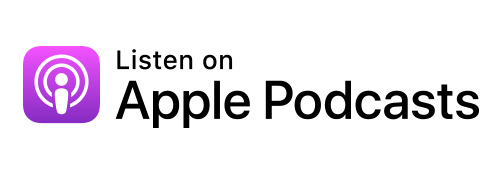

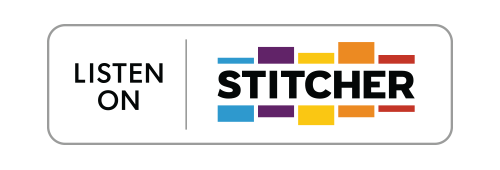


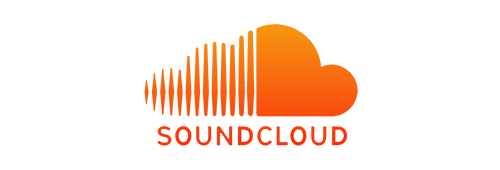

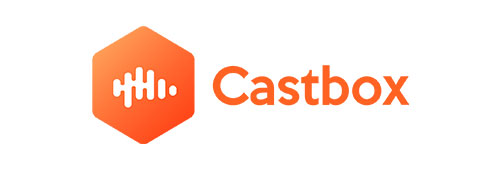
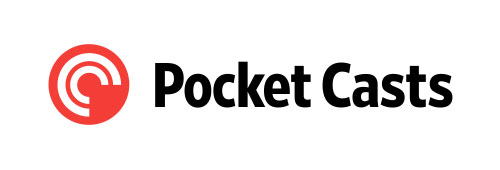
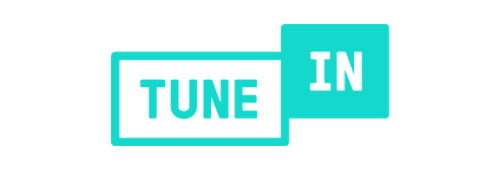
Leave a Reply